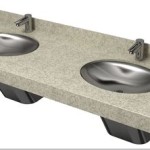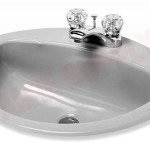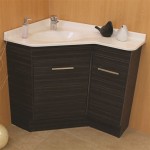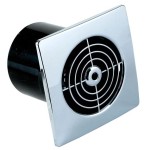Standard Bathroom Vent Fan Size
Proper ventilation is crucial for maintaining a healthy and comfortable bathroom environment. Excess moisture from showers and baths can lead to mold and mildew growth, peeling paint, and musty odors. A bathroom exhaust fan effectively removes this moisture, protecting the structural integrity of the bathroom and promoting better indoor air quality. Choosing the right size fan is essential for optimal performance.
Key Factors Determining Bathroom Vent Fan Size
Several factors influence the appropriate size for a bathroom vent fan. Understanding these factors allows for informed decisions and ensures the fan operates effectively.
Bathroom Size: The larger the bathroom, the more powerful the fan needs to be to effectively remove moisture. This is the primary factor in determining the correct fan size.
Ceiling Height: Higher ceilings require more powerful fans to move the air effectively. Standard calculations often assume an 8-foot ceiling. Adjustments are necessary for ceilings taller than 8 feet.
Bathroom Features: Features like a separate shower or toilet area may require additional ventilation. Consider these features when calculating the necessary airflow.
Understanding CFM and Sones
Two key metrics are used to quantify bathroom vent fan performance: cubic feet per minute (CFM) and sones.
CFM (Cubic Feet per Minute): CFM measures the volume of air the fan moves per minute. A higher CFM rating indicates a more powerful fan capable of extracting more moisture. Calculating the required CFM is crucial for selecting the right fan size.
Sones: Sones measure the perceived loudness of the fan. A lower sone rating indicates a quieter operation. While effective moisture removal is paramount, a quieter fan enhances comfort.
Calculating Required CFM
Accurately calculating the necessary CFM ensures the fan effectively ventilates the bathroom. Several methods can be used to determine this value.
Method 1: Bathroom Square Footage: A general rule of thumb is to use 1 CFM per square foot of bathroom area. For example, a 50-square-foot bathroom would require a 50 CFM fan.
Method 2: Calculating by Fixture: This more precise method assigns CFM values to each fixture in the bathroom. For example, a toilet typically requires 50 CFM, a shower 50 CFM, and a bathtub 50 CFM. Adding the CFM requirements for each fixture provides the total CFM needed.
Method 3: Considering Ceiling Height: For ceilings taller than 8 feet, multiply the calculated CFM by the ceiling height divided by 8. For example, for a 10-foot ceiling and a calculated CFM of 50, the adjusted CFM would be 50 * (10/8) = 62.5 CFM.
Common Bathroom Vent Fan Sizes and Applications
Understanding typical fan sizes and their applications helps narrow down the selection process based on specific bathroom characteristics.
50 CFM: Suitable for small bathrooms or powder rooms with limited moisture production.
70 CFM: Appropriate for medium-sized bathrooms with a shower or bathtub.
100 CFM: Ideal for larger bathrooms with multiple fixtures or high ceilings.
110 CFM and above: Designed for very large bathrooms, bathrooms with steam showers, or those requiring extra ventilation.
Choosing the Right Sone Level
While CFM dictates airflow, sones determine the noise level. Selecting the appropriate sone level balances ventilation effectiveness with comfortable noise levels.
0.5-1.0 Sones: Considered very quiet, ideal for bathrooms where noise is a concern.
1.5-2.0 Sones: Moderately quiet, suitable for most bathrooms.
3.0 Sones and above: Louder and typically reserved for larger bathrooms where noise is less of a concern but higher airflow is necessary.
Installation Considerations
Proper installation is vital for optimal fan performance. Several factors impact installation efficiency and effectiveness.
Ducting: Use the shortest and straightest ductwork possible to maximize airflow. Avoid using flexible ducting over long distances, as it can restrict airflow.
Exterior Vent: Ensure the exterior vent is properly installed and free of obstructions to prevent backdrafting and reduced performance.
Electrical Connections: Follow all manufacturer instructions and local electrical codes when connecting the fan to the power supply.
Maintenance and Care
Regular maintenance ensures the long-term performance and efficiency of the bathroom vent fan.
Cleaning: Dust and debris can accumulate on the fan blades and housing, reducing airflow. Regularly clean the fan grille and blades to maintain optimal performance.
Lubrication: Some fans may require lubrication. Consult the manufacturer's instructions for specific lubrication recommendations.
Inspection: Periodically inspect the ductwork and exterior vent for obstructions or damage.

Commercial Tf Bathroom Fans Continental Fan

95m³ H Silent Wall Mounted Exhaust Fan 100mm In White Standard Timer The Lighting

Standard 100mm Duct Size White Ventilation Fan Bathroom Air Flow Kitchen Extractor

How To Choose The Right Exhaust Fan Jd Lighting

How To Choose The Best Bathroom Fan Size For Your Space Bob Vila

Exhaust Fan Standard Wall 11 13 15 Inches Plastic Square Louver

Bathroom Exhaust Fan Duct Size 4 9 Inches 50 250 Cfm Chart

Hampton Bay 50 Cfm Wall Ceiling Mount Roomside Installation Bathroom Exhaust Fan Energy Star 7114 01 The Home Depot
Standard Exhaust Fan Size 6 8 10 12 Ee Es

What Extractor Fan Do I Need For My Bathroom Blog World
Related Posts







